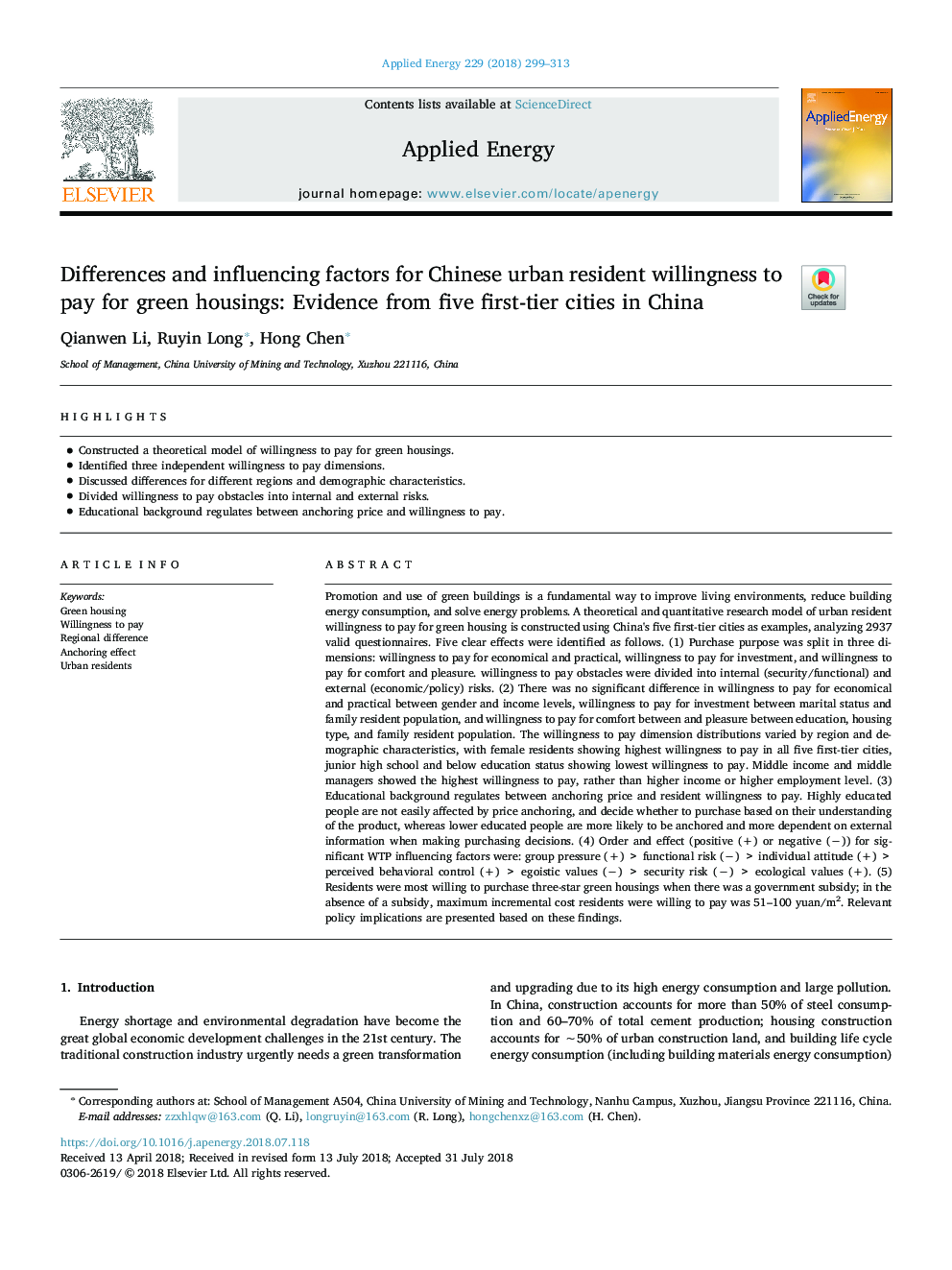| Article ID | Journal | Published Year | Pages | File Type |
|---|---|---|---|---|
| 6679648 | Applied Energy | 2018 | 15 Pages |
Abstract
Promotion and use of green buildings is a fundamental way to improve living environments, reduce building energy consumption, and solve energy problems. A theoretical and quantitative research model of urban resident willingness to pay for green housing is constructed using China's five first-tier cities as examples, analyzing 2937 valid questionnaires. Five clear effects were identified as follows. (1) Purchase purpose was split in three dimensions: willingness to pay for economical and practical, willingness to pay for investment, and willingness to pay for comfort and pleasure. willingness to pay obstacles were divided into internal (security/functional) and external (economic/policy) risks. (2) There was no significant difference in willingness to pay for economical and practical between gender and income levels, willingness to pay for investment between marital status and family resident population, and willingness to pay for comfort between and pleasure between education, housing type, and family resident population. The willingness to pay dimension distributions varied by region and demographic characteristics, with female residents showing highest willingness to pay in all five first-tier cities, junior high school and below education status showing lowest willingness to pay. Middle income and middle managers showed the highest willingness to pay, rather than higher income or higher employment level. (3) Educational background regulates between anchoring price and resident willingness to pay. Highly educated people are not easily affected by price anchoring, and decide whether to purchase based on their understanding of the product, whereas lower educated people are more likely to be anchored and more dependent on external information when making purchasing decisions. (4) Order and effect (positive (+) or negative (â)) for significant WTP influencing factors were: group pressure (+) ï¼ functional risk (â) ï¼ individual attitude (+) ï¼ perceived behavioral control (+) ï¼ egoistic values (â) ï¼ security risk (â) ï¼ ecological values (+). (5) Residents were most willing to purchase three-star green housings when there was a government subsidy; in the absence of a subsidy, maximum incremental cost residents were willing to pay was 51-100 yuan/m2. Relevant policy implications are presented based on these findings.
Related Topics
Physical Sciences and Engineering
Energy
Energy Engineering and Power Technology
Authors
Qianwen Li, Ruyin Long, Hong Chen,
